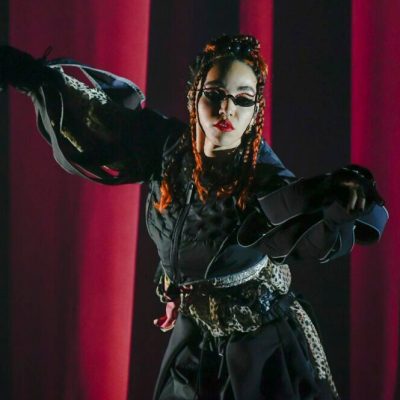
 ‘Four things to see’ is sponsored by Bloomberg Connects, the free arts and culture app. Bloomberg Connects lets you access museums, galleries and cultural spaces around the world on demand. Download the app here to access digital guides and explore a variety of content.
‘Four things to see’ is sponsored by Bloomberg Connects, the free arts and culture app. Bloomberg Connects lets you access museums, galleries and cultural spaces around the world on demand. Download the app here to access digital guides and explore a variety of content.
Each week we bring you four of the most interesting objects from the world’s museums, galleries and art institutions, hand-picked to mark significant moments in the calendar.
The summer solstice is upon us, and the streets of Paris are alive with the sound of music: it is time for the annual Fête de la Musique, which takes place this year on 21 June. The event, inaugurated in 1982 by the French Ministry of Culture and now celebrated in 120 countries around the world, invites musicians of all kinds to perform free concerts in public spaces, transforming them into fonts of melodies and rhythms, and bringing music out into the public realm.
Across classes and cultures, music has always been part of the fabric of artistic expression. Join us as we look at four objects that together explore the ways in which artists and craftspeople have for millennia been inspired by music – or in some cases, have helped create it.
The piano played by Emily Brontë and her siblings, manufactured in 1820 by the firm of John Green. Brontë Parsonage Museum, Haworth. Photo: Bevan Cockerill; © The Brontë Society

The Brontës’ piano (1820), John Green
Brontë Parsonage Museum, Haworth
Emily Brontë is best known for her sole novel, Wuthering Heights, published the year before she died at the age of 30. But she was also a skilled pianist, probably the most accomplished among her siblings, and studied (and taught) piano in Brussels for a time. This upright piano, distinguished by a screen of purple silk that conceals the hammers and strings, is a touching embodiment of the breadth of her skillset, and a reminder that the lyrical qualities of her prose and poetry sprang from a deeply musical mind. Find out more on the Bloomberg Connects app by clicking here on your mobile device, or by scanning the QR code at the bottom of this page.
Ganesha playing music (Chennai, 21st century). Linden-Museum, Stuttgart

Ganesha playing music (21st century), Chennai
Linden-Museum, Stuttgart
This vivid papier-mâché ensemble consists of six manifestations of the Hindu deity Ganesha playing various musical instruments, including tabla, stringed instruments, flute and cymbals. Often displayed during festivals like Navarattiri in Tamil Nadu, these colourful figures are handmade by artisans for families to collect as part of their annual celebrations. Click here to read more.
A bronze sistrum with a double-faced Hathor handle (Late Period Egypt, 713–332 BC). Egyptian Museum, Cairo

Bronze sistrum with double-faced Hathor handle (Late Period Egypt, 713–332 BC)
Egyptian Museum, Cairo
This Egyptian bronze sistrum, a kind of rattle, features a carving of Hathor, goddess of music, love and joy. Adorned with cobras and gold, it was used in temple rituals to create rhythms and for warding off spirits. The intricate design reflects Hathor’s divine influence and the sistrum’s importance in religious ceremonies. Click here to discover more.
Party with Musicians (late 19th century), Theodor Aman. National Museum of Art of Romania (MNAR), Bucharest

Party with Musicians (late 19th century), Theodor Aman
National Museum of Art of Romania, Bucharest
A depiction of Bucharest’s high society in the 1880s, this painting by Theodor Aman (1831–91) captures a relaxed family gathering with a traditional band of musicians. The cellist wears a Western-style suit, indicating his formal musical education. Reflecting modernity through fashion and leisure, the work offers a glimpse into Romanian culture during that era, blending Western influence with local traditions in a vibrant scene of domestic life. Click here to find out more.
![]() ‘Four things to see’ is sponsored by Bloomberg Connects, the free arts and culture app. Bloomberg Connects lets you access museums, galleries and cultural spaces around the world on demand. Download the app here to access digital guides and explore a variety of content or scan the QR code.
‘Four things to see’ is sponsored by Bloomberg Connects, the free arts and culture app. Bloomberg Connects lets you access museums, galleries and cultural spaces around the world on demand. Download the app here to access digital guides and explore a variety of content or scan the QR code.


